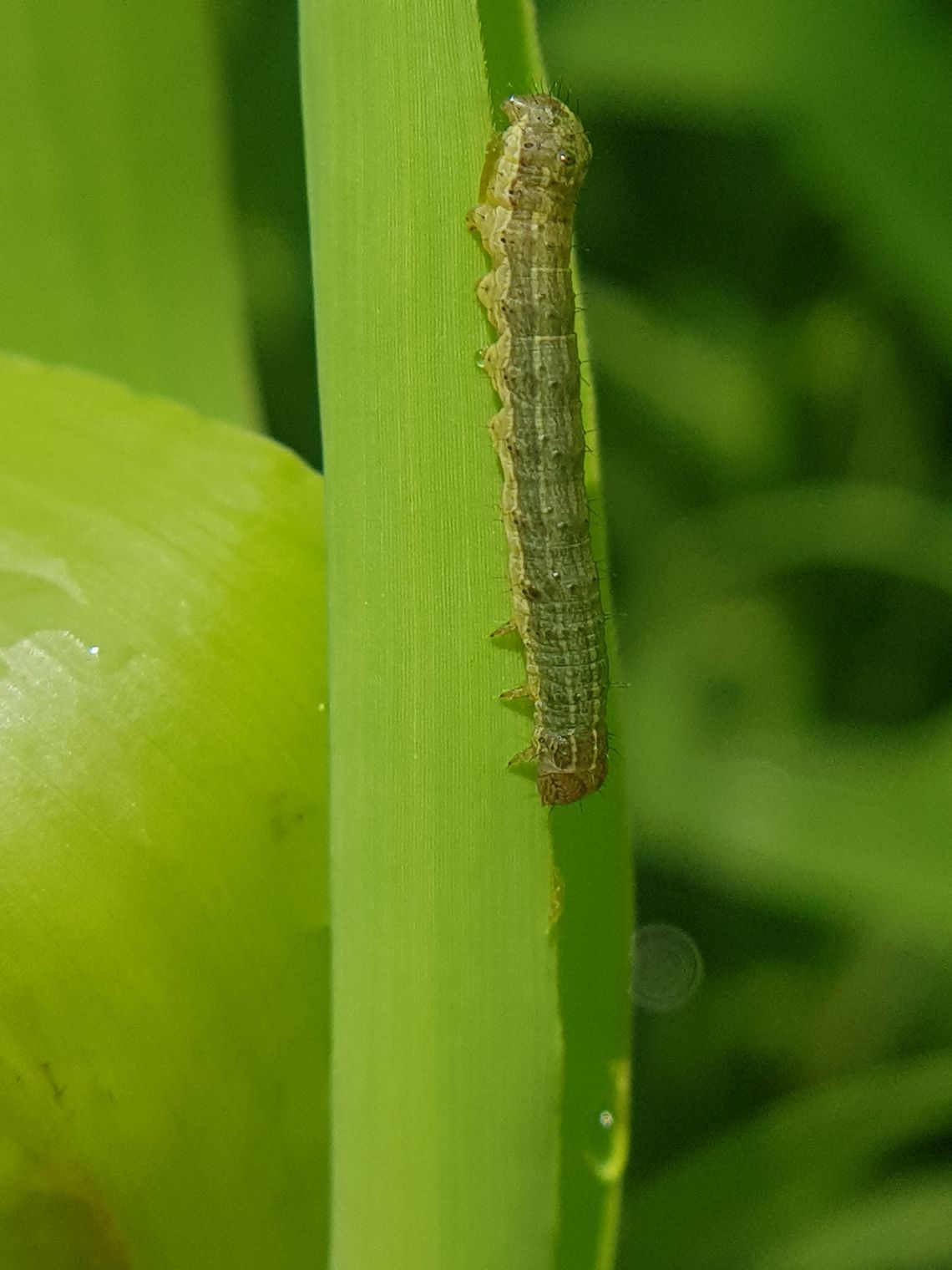.jpg)
By Doug Carter, Rankin County Extension Agent
Fall armyworms are the most damaging insect pests of Mississippi hayfields and pastures. These caterpillars can destroy a field of bermudagrass in just a few days.
Fall armyworms are unpredictable pests. Some years high populations do not occur until fall, and the most heavily infested fields require only two sprays. Other years, like seems to be the case this year, damaging infestations appear as early as June, and some fields require 6 or more treatments.
Armyworms cannot survive the winter here in Mississippi. Populations rebuild every year from moths that fly in from locations farther south. Places like South America, the Caribbean Islands, and Southern Florida. Some years, the moths arrive earlier than others or find better growing conditions once they arrive here.
This is also why infestations usually occur earlier in the southern part of the state, and populations are highest in late summer and fall. After they arrive in the south, it usually takes them a few generations to build damaging numbers.
Fall armyworm caterpillars vary in color depending on their stage of development and diet. Most are green or tan, some can be dark brown or almost black, especially later in the year. The body has dark spots. Most notably, there are four spots at the rear of the body that form a square, and a distinct white inverted Y shape on the head. Mature caterpillars are about 1 ½ inch long.
Fall armyworm caterpillars take about 14 days to complete their larval development, it takes about 1 month to complete a generation. Development rate can vary depending on temperature and other factors. As with other caterpillars, about 80 percent of total leaf consumption occurs in the last 2-3 days of the caterpillar stage. Therefore, fall armyworm damage can occur very quickly. Grass that looked fine on Friday morning can be nothing but stems by Monday afternoon.
Newly hatched caterpillars are too small to feed all the way through a leaf blade. So, they begin by feeding on the underside of a leaf, but they leave the clear upper epidermis intact. This creates tiny “windowpanes” in the grass blades that appear silver or white. When large numbers of larva are just beginning to feed in the field, the grass often has the frosted appearance because of thousands of “windowpanes”.
Producers also watch for egrets and other birds feeding in a hayfield as an indicator of fall army worm problems. If you see lots of birds in your hayfield, you may want to check to see what they are feeding on.
Producers also become concerned about fall army worms if they see large numbers of moths flying in the headlights, as they drive across a hayfield after dark. Seeing large numbers of moths in headlights after dark, is a good reason to check for armyworms. Learning the early signs of armyworms, can help save a cutting of hay.
The best way to avoid losing a cutting of hay to fall army worms is to visit fields every 3 or 4 days and check for fall armyworms. It is best to get out of the truck and get on our hands and knees and look closely. Count the larvae that fall to the ground in a 1-square foot area. Do this at several locations in each field.
Treatment is recommended when the count exceeds three caterpillars that are one-fourth inch or longer per square foot.
Fall army worms are primarily pests of grasses, including ag crops such as corn, sorghum, rice, and millet. They especially like bermudagrass. It does not matter to them if the bermudagrass is in a yard, golf course, or is grown for hay. They also like some wide-leafed weedy grasses, such as barnyard grass, and broadleaf signal grass.
Fall army worms will attack early planted winter grazing crops, such as wheat and ryegrass, and can destroy stands as these crops are emerging.
Over the past few years there have been improvements in treatment options for fall armyworms. Traditional products include Seven and malathion, which are still available. There are many new products that are cheaper, more effective, provide longer residual control, and/or have more favorable pre-harvest intervals. These include several pyrethroid insecticides (zeta-cypermethrin-Mustang Max, cyfluthrin-Baythroid, and gamma-cyhalothrin-Declare) and two growth regulators (methoxyfenozide-Intrepid, and diflubenzuron-Dimilin), as well as several more caterpillar specific products (chlorantraniliprole-Vantacor, and spinosad-Blackhawk).
The pyrethroid insecticides are all restricted use products, which means you must have a current pesticide applicator certification card to be able to buy and use these products. It will probably be worth your time and effort to get this certification because pyrethroids are an effective, low-cost fall armyworm treatment. The growth regulator diflubenzuron is also a restricted use insecticide.
The preharvest interval for each insecticide can vary depending on whether the grass will be grazed or cut for hay. Also, “days to harvest” means days to cutting, not baling.


Comment
Comments